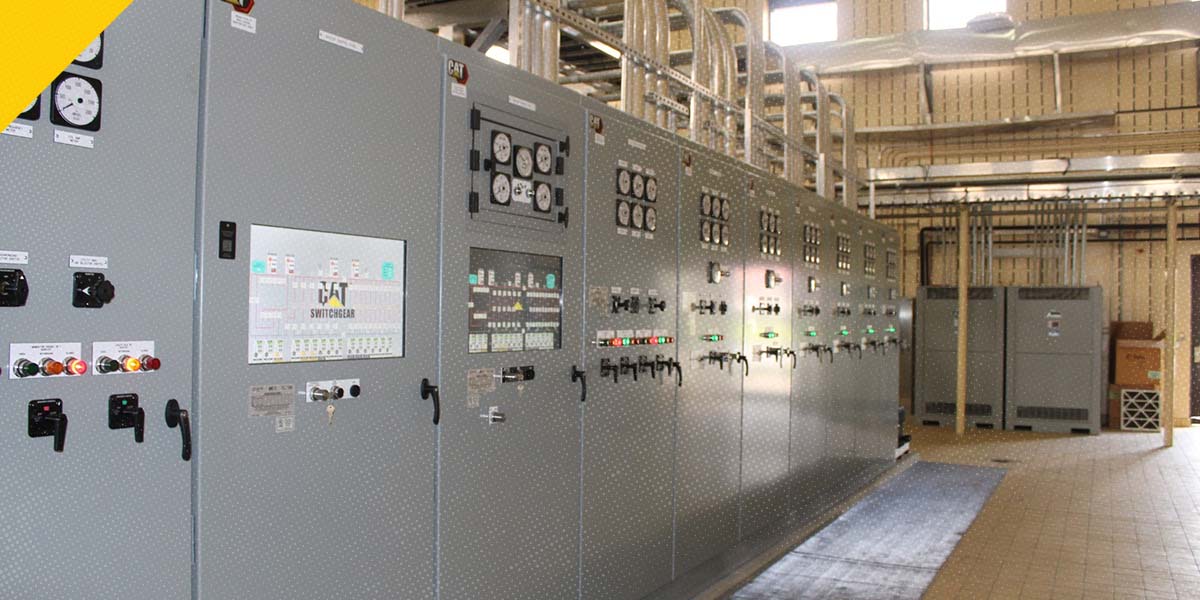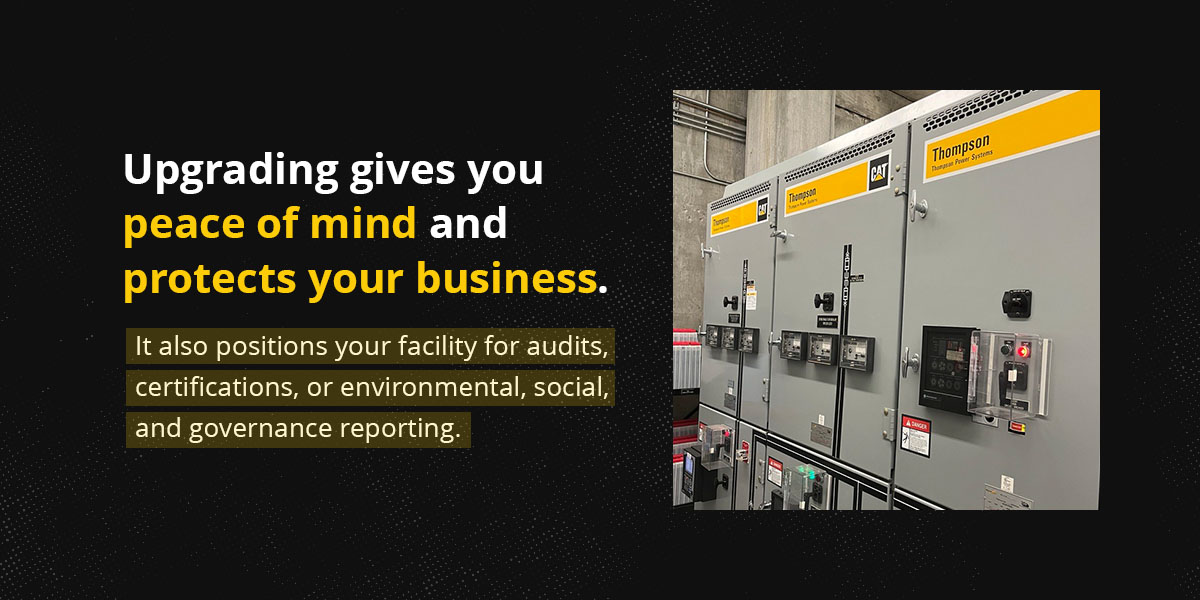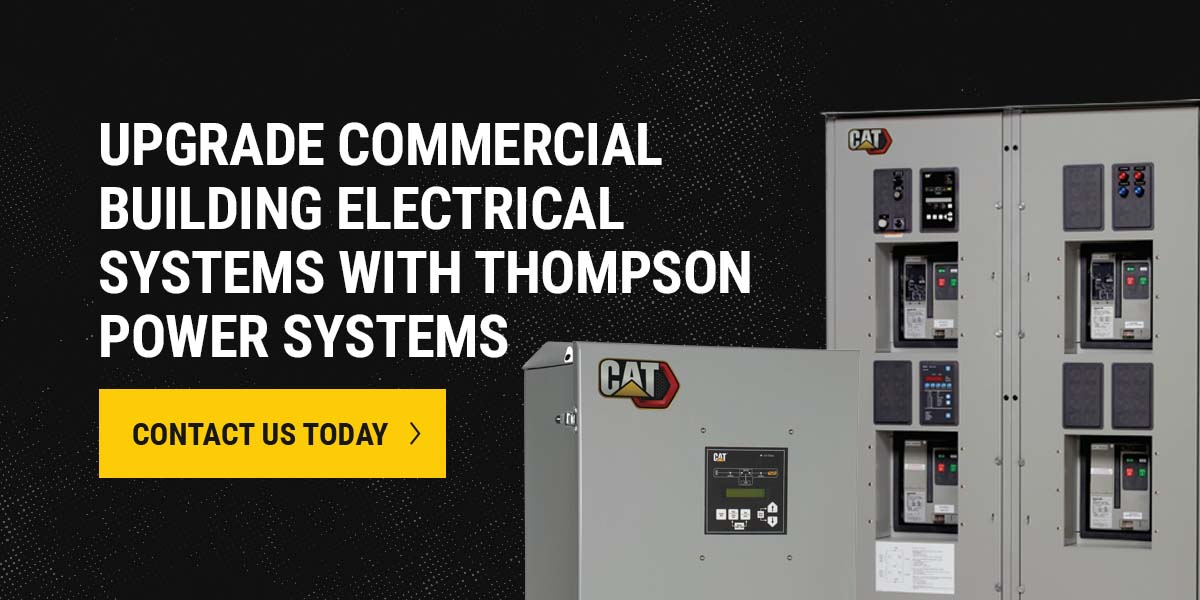

If you’re managing a commercial facility, you know how critical electrical infrastructure is. Power supports your teams, protects your assets, and helps you deliver on commitments. However, the systems behind that power don’t stay current forever.
Electrical demands evolve, regulations shift, and equipment ages. What worked several years ago may not be enough to support current load requirements or risk mitigation plans. That’s where electrical upgrades come in.
Electrical upgrades provide reliability, performance, and cost control. Learn about five electrical upgrades for commercial buildings below.
Generators are typically the first line of defense when grid power fails. Gas and diesel generators are highly dependable and provide an immediate source of electricity.
This equipment provides fast startup and can handle heavy loads, making it ideal for standby or continuous use in remote applications. Some gas generators offer quieter operation and fuel flexibility, which is valuable for locations with natural gas access or stricter emissions requirements. Some power system providers carry a full line of both types, including Tier 4-compliant models, ensuring commercial clients meet environmental standards and reliability.
During unplanned outages, these systems safeguard against revenue loss, equipment damage, compliance issues, and reputational risk. When integrated properly, they also support long-term energy-saving strategies.
Battery energy storage systems (BESS) simplify how commercial buildings interact with the grid and manage internal power use. By storing excess power from the grid or other sources, buildings can draw from that stored energy during peak hours or interruptions.
The value of BESS is growing as utilities implement more complex structures and companies look to reduce their demand charges. Commercial-grade storage solutions are designed with scalability, containerization, and integration in mind. They respond quickly to changes in demand, offering smooth, silent, and emissions-free transitions.
Battery systems also support grid stability and can serve as a bridge between primary and secondary power sources. When paired with generators, they create hybrid energy setups that are efficient and resilient.
Automatic transfer switches (ATS), breakers, and contactors ensure a seamless transition from one power source to another without manual intervention.
In industries where delays or gaps in load transfer can result in data loss, equipment malfunctions, and safety hazards, ATS systems can sense failures or outages and transfer loads to your backup power system. They consider load type, voltage quality, and safety protocols to ensure a clean handoff.
When paired with breakers and commercial electrical panel upgrades, these systems help modernize your electrical infrastructure. This includes features like remote monitoring and diagnostics. The result is a safer, more automated facility that maintains continuity.
As businesses scale in size or complexity, managing electrical loads and multiple power sources becomes increasingly challenging. That’s where switchgear and paralleling controls become essential. These systems control your infrastructure, allowing operators to isolate faults, manage load flow, and bring multiple generators or distributed energy resources online.
Paralleling controls enable sources to share loads efficiently and maintain power quality and frequency stability. These systems can sustain low- and medium-voltage applications, with integrated safety and automation-ready features.
Microgrids are essential for organizations looking to reduce reliance on the grid while increasing their control over energy costs and availability. A microgrid connects to multiple power sources in a self-contained system that can operate independently or with a larger utility grid.
For commercial buildings, microgrids can be appealing. They offer energy independence so operations can continue during outages or grid failures. Additionally, they enable long-term cost optimization by using the most efficient energy source available.
Aging or underperforming electrical infrastructure can derail operations. If you’re managing a facility’s daily performance or planning for long-term growth, upgrades can help you stay resilient. Here’s why commercial building owners and decision-makers should upgrade their electrical systems.
Electrical system regulations evolve constantly. National Electrical Code standards, Occupational Safety and Health Administration standards, and local permitting requirements are updated to reflect new technologies and best practices.
If your power system is outdated, you might encounter roadblocks during inspections, renovations, or expansions. Additionally, a noncompliant system can become a liability in the event of an incident. For businesses bidding on government or industrial contracts, a lack of commercial electrical compliance may disqualify you from consideration.

Upgrading gives you peace of mind and protects your business. It also positions your facility for audits, certifications, or environmental, social, and governance reporting.
Outdated systems increase the risk of arc flash, electrical fires, and equipment failure. Older systems may be stretched beyond what they were designed to handle as loads increase. Wiring, panels, and distribution systems that were compliant a decade ago might now be dangerous under the current demand.
If businesses want to maintain commercial electrical safety, upgrading power systems can provide safer working conditions for their teams.
Older electrical systems are less efficient and harder to maintain. They can’t support intelligent load management, and it may be costly or harder to source parts when something breaks.
Small inefficiencies increase if your building relies on consistent uptime. Replacing reactive maintenance with an upgrade is a strategic cost-saving approach for commercial electrical systems because it helps reduce unplanned outages or emergency repairs. Upgraded systems allow for better energy monitoring and load balancing, leading to operational savings.
Modern electrical infrastructure lets you do more with every kilowatt. With newer systems, you can integrate with battery storage and programs that reduce energy consumption and cost. You can also track usage in real time and adjust loads.
Energy efficiency in commercial buildings makes electricity a controllable part of your budget.
Downtime contributes to lost production or interrupted service. A modernized system gives you consistency and reliability. Upgrades like ATS and paralleling controls reduce the chance of failure and let you respond faster when something goes wrong. They also allow you to prioritize loads and isolate faults to maintain operations.
When your electrical system supports your operations, your team may experience fewer outages and faster equipment performance. A stable, modern electrical system lets your team focus on their work. It also supports modern technologies with no need for constant workarounds.

Thompson Power Systems understands that power systems are vital to business operations. For over 65 years, we’ve helped businesses in Alabama and northwest Florida build reliable electrical infrastructures that meet current demands. Our team works with building contractors, engineers, and operations leaders to create the right power solutions for their facilities.
We’re local and responsive, so you can receive the support you need. When you partner with us, you invest in reliability, longevity, and peace of mind. Contact us today to learn more.